How about more insights? Check out the video on this topic.
Introduction
The recent license change by Redis Ltd. has stirred significant discussion within the tech community, prompting many to seek out alternative solutions to Redis. This licensing shift has left numerous developers and organizations reevaluating their choices. In a recent webinar titled “Redis Alternatives Compared,” Peter Zaitsev, founder of Percona and a prominent figure in the open-source database world, brings a unique perspective to this discussion. With a history of championing open-source solutions and forking projects to preserve community-driven development, Zaitsev’s insights into Redis alternatives are invaluable.
Why Redis Alternatives Matter?
For years, Redis has been a beloved and widely used in-memory data store known for its exceptional performance, versatility, and rich feature set. However, the recent licensing change has raised concerns about vendor lock-in and potential cost implications for certain users. This has created a unique opportunity for alternative solutions to step into the spotlight.
A Look Back at Redis

Redis, a brainchild of Salvatore Sanfilippo, emerged as a powerful tool for caching, real-time data processing, and numerous other applications. Its practical approach and strong community support have been key factors in its widespread adoption. Nonetheless, the evolving landscape has prompted us to re-evaluate the choices available to us.
The Redis License Drama Unveiled
To understand the current landscape of Redis alternatives, it’s crucial to delve into the recent “Redis drama.” This refers to the series of events surrounding the change in Redis’s licensing model. Originally an open-source project with a permissive BSD license, Redis’s popularity soared due to its accessibility and robust features. This permissive license was a key factor in its rapid adoption, surpassing its predecessor, Memcached.
The Rise of Redis Labs

Interestingly, Salvatore Sanfilippo, the creator of Redis, didn’t initially build a business around his creation. Instead, several companies sponsored Redis and Sanfilippo’s work on it. It wasn’t until 2013 that Garantia Data, later rebranded as Redis Labs (and eventually just Redis), entered the scene with a focus on enterprise solutions for Redis.
A Shifting Landscape
Redis Labs’ journey mirrors that of many database companies, as they shifted their focus toward cloud-first and enterprise offerings. The relationship between Salvatore Sanfilippo and Redis Labs also evolved. Initially, there was tension when Garantia Data attempted to rebrand itself as Redis DB. However, Sanfilippo eventually joined Redis Labs and, in 2018, transferred Redis’s IP to the company.
License Changes and Open Source Concerns
The transfer of Redis’s IP to Redis Labs marked a significant turning point. Unlike Linus Torvalds, who secured Linux’s open-source future by placing it under the control of a foundation, Sanfilippo’s decision raised questions about the long-term openness of Redis. Despite public assurances about Redis remaining open source, Sanfilippo stepped down from the project in 2020.
Redis Labs, alongside MongoDB, became a champion of the “open source but not really” movement. This involved devising ways to retain the “open source” label while limiting competition. These actions have fueled the current interest in exploring Redis alternatives that offer true open-source flexibility.
The Commons Clause Controversy and License Changes

Redis Labs’ first attempt to modify the licensing involved adding a “Commons Clause” to their modules. This clause was designed to give Redis Labs a monopoly in the cloud by restricting competition from other cloud providers offering Redis-based services. The move was met with significant backlash from the community, prompting Redis Labs to abandon the idea.
Instead, they opted for a different approach, licensing Redis modules under the Server Side Public License (SSPL) and their own Redis Source Available License. These licenses aimed to maintain some level of openness while still protecting Redis Labs’ commercial interests.
Broken Promises and Community Backlash
Despite assurances from Redis Labs and Salvatore Sanfilippo that the core Redis project would remain open source, the license change in March 2021 left many feeling betrayed. The community had been led to believe that Redis would continue to be freely available and modifiable, but the new licensing terms introduced restrictions on certain use cases.
The Monopoly Motive

The primary motivation behind Redis Labs’ license change was clear: to establish a monopoly in the database-as-a-service (DBaaS) market. Many cloud providers have been offering Redis services without paying royalties to Redis Labs. By adopting a “cloud non-compete” license, Redis Labs aimed to capture a larger share of the lucrative DBaaS market, especially as they were considering going public.
The Problem with Cloud Monopolies

While the license change might not directly impact individual users running Redis on their laptops, it has significant implications for businesses seeking DBaaS solutions. With a monopoly, companies are forced to purchase Redis services from a single vendor or authorized resellers, potentially leading to higher costs and limited flexibility.
Lessons from History
The situation with Redis Labs draws parallels to Oracle’s history. Oracle initially positioned itself as a company fighting against vendor lock-in, but over time, it became notorious for its aggressive pricing tactics and restrictive licensing. The Redis community is understandably wary of repeating this pattern, where customers become “hostages” to a single vendor.
The Ripple Effects of the License Change
While the Redis license change might not immediately affect individuals, it has far-reaching consequences. Companies often transition to the cloud, potentially locking them into a single Redis provider. Additionally, Redis Labs’ increased control could discourage contributions from other companies and individuals, leading to stagnation.
This lack of community involvement could hinder innovation and reduce the availability of commercial and enterprise support, even for those not using Redis in the cloud. Cloud vendors, previously significant contributors to Redis, might reduce their involvement due to the new license terms.
The Community Responds: The Rise of Forks

In response to the license change, the open-source community leveraged its strength and created forks of Redis. The Redis Community Toolkit (RCT) emerged shortly after the announcement, followed by the Valkey project, supported by the Linux Foundation and numerous vendors. The Linux Foundation’s involvement is noteworthy, as it signifies a growing trend of established organizations supporting open-source forks.
Lessons from Other Forks
The history of open-source forks provides valuable insights. Elasticsearch’s fork, OpenSearch, has seen gradual adoption, chipping away at Elasticsearch’s market share. MongoDB’s license change also led to a decline in its popularity, with PostgreSQL, a community-driven database, overtaking it.
Redis's Growth Trajectory
Examining Redis’s performance in the DB-Engines ranking reveals stagnation after the initial license change for its modules. This lackluster growth likely played a role in Redis Labs’ decision to further restrict the license, attempting to monetize its existing market share more aggressively.
Evaluating Redis Alternatives: Key Considerations

When considering Redis alternatives, several crucial factors warrant careful evaluation:
- License: The licensing model is paramount, especially for open-source projects. Determine whether the license aligns with your current and future requirements. Some projects are proprietary, limiting your deployment options to specific vendors or cloud platforms. Open-source licenses, on the other hand, offer greater flexibility.
- Governance: Understand how the project is governed. Is it controlled by a single vendor or a foundation? Single-vendor governance can lead to unexpected license changes or even project sales. Recent events have highlighted the importance of community-driven or foundation-led governance for ensuring long-term open-source commitments.
- Community: A thriving community is vital for any project’s success. This includes three key aspects:
- User Community: A large user base ensures thorough bug detection and a wealth of shared experiences, making it easier to find talent with project expertise.
- Contributor and Developer Community: A diverse group of contributors fosters a stable project. If contributions are dominated by a single vendor, the project’s long-term viability outside that vendor’s influence might be uncertain.
- Vendor Community: A healthy vendor community offers a range of commercial support and professional services options, preventing vendor lock-in and ensuring competitive pricing.
Technical Considerations: Compatibility and Beyond
Beyond licensing and governance, several technical factors play a crucial role in selecting a Redis alternative:
- Compatibility: This factor is highly specific to your use case. Assess whether the alternative seamlessly replaces Redis for your specific needs. Consider compatibility with core Redis features, Redis modules (if you use them), and the desired performance and scalability levels.
- Accessibility: Ensure the alternative is accessible in the same way you currently use Redis. If you rely on Redis as a DBaaS, look for alternatives offering similar cloud-based services. For those running Redis in Kubernetes, the availability of Kubernetes operators is essential.
- Redis Enterprise Modules: While many users leverage Redis without extensions, a significant portion relies on Redis modules for specific functionalities. Consider whether the alternative offers similar features or if the community is actively reimplementing Redis modules.
- Commercial Support: For mission-critical applications, especially in large organizations, commercial support is paramount. It provides a safety net with SLAs, timely security bug fixes, and expert assistance. Having multiple vendors offering support is ideal to avoid vendor lock-in.
By evaluating these technical aspects alongside licensing and governance, you can make a well-rounded decision that aligns with your organization’s technical requirements and risk tolerance.
Redis Alternatives: A Closer Look

Let’s explore some notable Redis alternatives, categorized into Redis forks and implementations of the Redis protocol on different code bases:
Redis Forks
- Redict: This was the first Redis fork, released in March 2022 under the LGPL license to prevent future proprietary licensing. However, it hasn’t gained much traction, likely due to the emergence of Valkyrie.
- Valkyrie: Backed by the Linux Foundation and numerous vendors, Valkyrie is a Redis fork that retains the free BSD license. It has gained significant momentum, boasting 49 contributors on GitHub within a month of its launch.
- KeyDB: Initially a commercial Redis fork with community and enterprise editions, KeyDB was acquired by Snap Inc. and released under a free BSD license. While public development has slowed, it remains a viable option, especially if commercial support emerges.
Redis Protocol Implementations
- Redka: Built on SQLite, Redka implements the Redis protocol, offering features like transactions and an in-process API. While not a complete Redis replacement, it’s a promising project with potential for specific use cases.
- Dragonfly DB: This project positions itself as “Redis with wings,” promising higher throughput and lower latency. It comes in community and cloud editions, with the community edition adopting an anti-cloud business license.
- Garnet: Released just before Redis’s license change, Garnet is a “Remote Cache Store ” from Microsoft Research. It implements the Redis protocol with a focus on performance and clustering, using modern .NET technology.
Cloud-Specific Options
- Amazon MemoryDB: This is Amazon’s proprietary in-memory database offering ultra-fast performance and durability. It’s available exclusively on Amazon Cloud and represents an alternative for those already invested in the AWS ecosystem.
The Future of Redis Alternatives

The Redis license change has sparked a wave of innovation in the Redis alternatives space. We can expect more projects to emerge, each with unique strengths and weaknesses. While Valkyrie currently shows significant promise due to its strong industry support and rapid development, the landscape is dynamic, and the “true” leader(s) may vary depending on specific use cases.
Conclusion
Despite the licensing changes, the Redis open-source community remains vibrant and active. The numerous forks and alternative implementations demonstrate the resilience and adaptability of the open-source ecosystem. By carefully evaluating the available options and considering your specific requirements, you can confidently choose a Redis alternative that empowers your projects and aligns with your values.
Related posts
Back to the future: Scaling infrastructure in a modern cloud world
How about more insights? Check out the video on this topic.In the ever-evolving landscape of cloud computing, the challenges of scaling infrastructure have taken on new dimensions....
The importance of interoperability and compatibility in database systems
How about more insights? Check out the video on this topic.The cloud has revolutionized how we store and access data. However, with a growing number of cloud-based tools and services,...
NoSQL: Why and When to Use It
How about more insights? Check out the video on this topic.Traditional SQL databases have long been the industry standard, but as modern applications demand more flexibility and...
Data Visualization Difficulties in Document Databases
How about more insights? Check out the video on this topic.Document databases have rapidly gained popularity due to their exceptional flexibility and scalability. However, effectively...
MongoDB Cluster Provisioning in Kubernetes: Deep Dive Demo with Diogo Recharte
Dive into the intricacies of provisioning a MongoDB cluster in Kubernetes with Diogo Recharte. Gain valuable insights and practical tips for seamless deployment and management.
How to provision a MongoDB cluster in Kubernetes: Peter Szczepaniak’s Tips
In this blog post, we’ll dive deeper into Peter’s presentation, exploring the step-by-step process of deploying a MongoDB cluster on Kubernetes along with best practices for success.
Elevating Disaster Recovery With Kubernetes-native Document Databases (part 2)
Explore a deep dive into disaster recovery with Nova in action, showcasing Kubernetes-native document databases. Join Maciek Urbanski for an insightful demo.
Elevating Disaster Recovery With Kubernetes-native Document Databases (part 1)
Learn about automating data recovery in Kubernetes with Nova and elevating disaster recovery with Kubernetes-native document databases with Selvi Kadirvel.
JSON performance: PostgreSQL vs MongoDB Comparison
Explore the JSON performance: PostgreSQL vs MongoDB in this comparison. This article summarizes key points, offering a concise comparison of JSON handling in both databases.
Global NoSQL Benchmark Framework: Embracing Real-World Performance
Learn about the Global NoSQL Benchmark Framework and how it embraces real-world performance. Explore insights from Filipe Oliveira, Principal Performance Engineer at Redis.
Subscribe to Updates
Privacy Policy




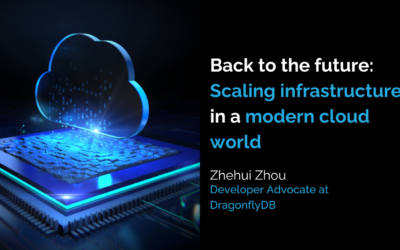
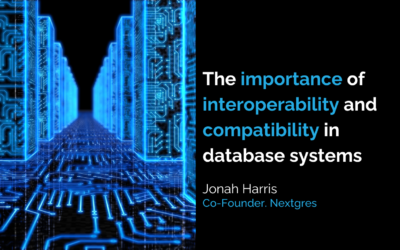
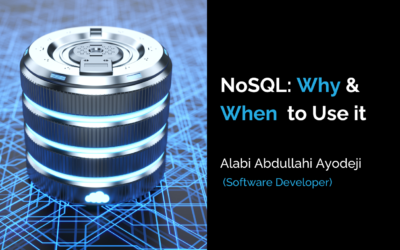
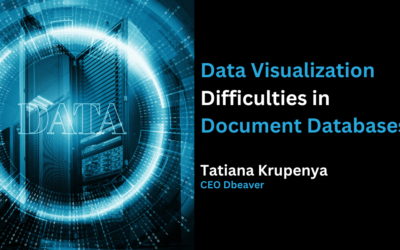

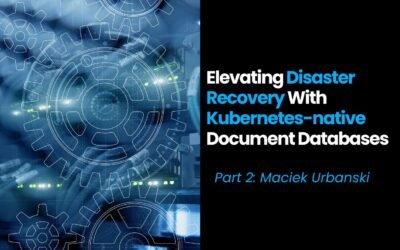
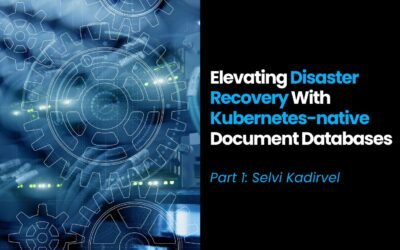

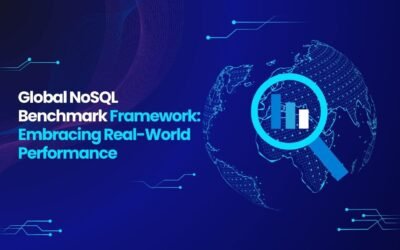
0 Comments